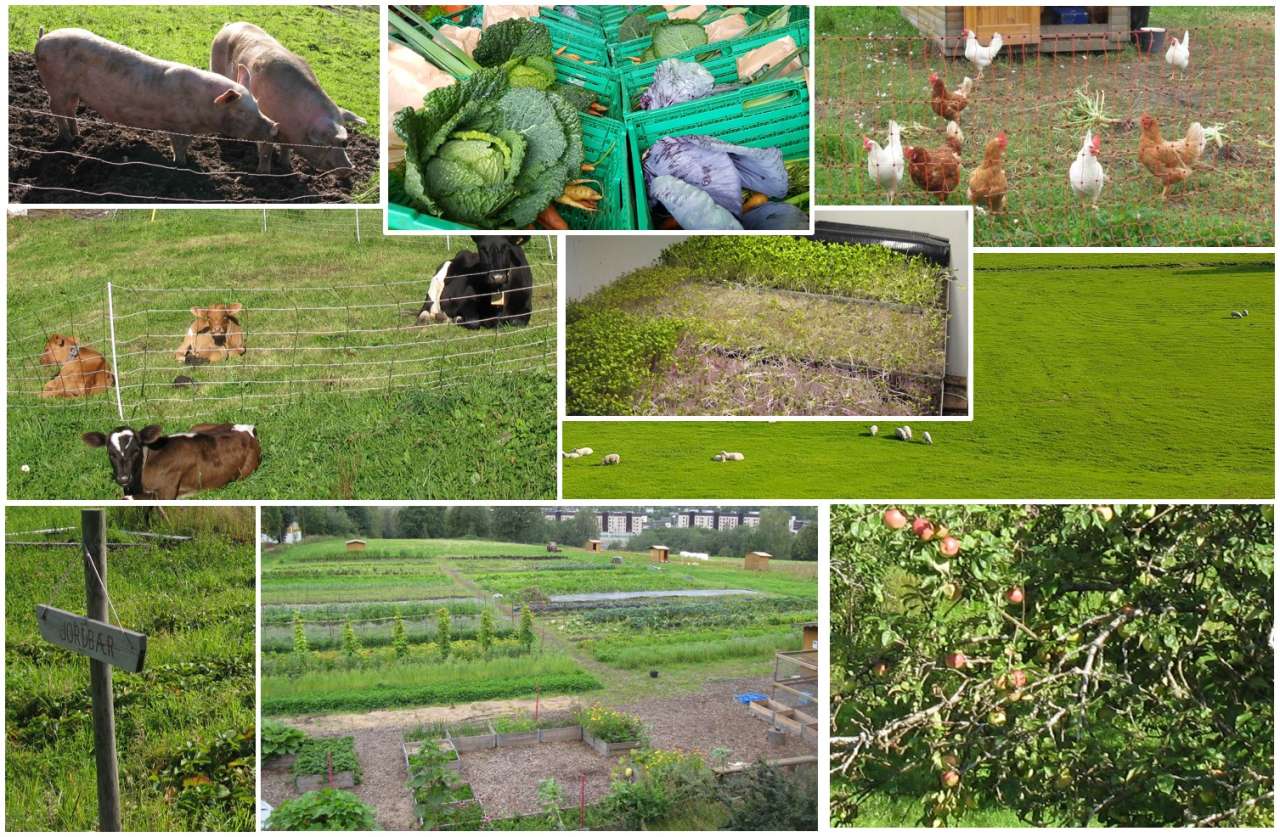Division of Survey and Statistics
Farmers and the city: enhancing added value and sustainability through optimized use of urban and peri-urban farm resources (URBANFARMS)

End: jul 2023
Start: apr 2019
The project aims at elaborating effective strategies for professional farmers in cities and peri-urban areas to make use of the vicinity of the city to increase added value from their production in an economically, socially and environmentally sustainable way. The project shall identify land resources that are not in optimal use, and demonstrate business models that increase the use of local nutrients and of the nearby city's market and purchasing power.
Project participants
Svein Olav Krøgli Ulrike Bayr Anna Birgitte Milford Anne Strøm Prestvik Asbjørn Veidal Frøydis Gillund Matthew Reed Daniel Keech Anne-Kristin Løes Rose (Ildri Kristine) Bergslid Kirsty McKinnon Maria Båtnes| Status | Concluded |
| Start - end date | 01.04.2019 - 31.07.2023 |
| Project manager | Sebastian Eiter |
| Division | Division of Survey and Statistics |
| Department | Landscape Monitoring |
| Total budget | 9570000 |
| Funding source | The Norwegian Research Council (BIONÆR) |
Urban and peri-urban farm enterprises can be integrated into the urban 'metabolism' (cycle of nutrients and organic matter) through organic waste recycling and production of new goods.
Two city regions in Norway with different prerequisites for agriculture (Oslo and Bergen) will be study areas, and one city in the UK (Bristol). In Bristol, urban farming as part of a sustainable food supply for the city has come much further than in Norway. Mapping of land resources, market analyses, farm potentials for strengthened contact with the urban market and integration of this into the urban metabolism will be studied for 5 farms in each region. The farms shall represent different business models in which at least some production is adapted to profit from the vicinity of the city (community supported agriculture, pick-yourself, direct sales, etc.). We will conduct economic, social and environmental sustainability analyses on farm level, using the SMART assessment with international reputation.
The consortium is interdisciplinary and international, with research scientists and other professionals from NIBIO and NORSØK in Norway, and from the Countryside and Community Research Institute and Bristol Food Network in the UK. The Norwegian Farmers Association and Organic Norway participate as stakeholder organisations. Disciplines represented are agronomy, economics, geography and sociology.
Publications in the project
Abstract
Recycling nutrients and organic matter available as waste in urban areas may close nutrient gaps and improve soil quality, but the concentrations of potentially toxic elements (PTEs) are commonly higher than in mineral fertilisers. How quickly may the limits for soil quality be exceeded, and for which elements, if such materials are applied intensively? For a rough answer to this question, we used soil data from ten case farms near Oslo and Bergen (Norway) to estimate how PTE concentrations increased when the demand for nitrogen (N), phosphorus (P) and potassium (K) in a theoretical carrot crop produced every year was covered by compost or digestate from source-separated food waste, or composted garden waste, compared with manure from horses and poultry which are often kept in peri-urban areas. With the intensive fertilisation assumed here, the Norwegian soil quality limits for PTEs were reached within 20–85 years, and faster for soil with more organic matter since regulatory limits set by weight discriminate soils with low bulk density. The limits were reached first for Cu and Zn, which are both essential micronutrients for crop plants. The concentrations of macronutrients in the urban waste-based fertilisers were not well balanced. Rates covering the K demand would lead to high surpluses of P and N. In peri-urban vegetable growing, high applications of compost are not unusual, but more balanced fertilisation is required. The Norwegian regulations for PTEs in organic soil amendments and agricultural soil are stricter than in the EU, and do not support recycling of organic matter and nutrients from urban waste. Many materials which can only be applied with restricted amounts to Norwegian agricultural soil, may be applied according to crop demand in the EU. Growers utilising urban waste-based fertilisers intensively should monitor the soil regularly, including PTE analyses. Soil sampling should occur on fixed sampling points to reveal changes in concentrations over time. Norwegian authorities should consider a revision of the organic fertiliser regulation to support recycling of valuable organic materials. There is a need for more data on the PTE concentrations in agricultural soil and organic fertiliser materials.
Abstract
No abstract has been registered
Authors
Anna Birgitte MilfordAbstract
No abstract has been registered
Abstract
No abstract has been registered
Abstract
Utdrag: Olavsbråten er en av 11 gårder som har deltatt i forskningsprosjektet Urbanfarms, som har sett på hvordan bønder i byer og bynære strøk kan øke verdiskapningen på gården på en bærekraftig måte ved å utnytte nærheten til byen.
Abstract
No abstract has been registered
Abstract
Mange som dyrker grønnsaker til direkte salg er interessert i økologiske driftsmetoder. Det er mye organisk materiale tilgjengelig i byer og tettbygde strøk. Matrester og avfall fra hager og parker kan bli til både energi og gjødsel, som kan brukes i dyrking av grønnsaker i bynære strøk. Da får vi korte verdikjeder, men hva med innholdet av tungmetaller? Beregninger viser at grenseverdier i jord vil mettes først for kobber og sink, som også er viktige mikronæringsstoffer. for planter. Jordforbedringsmidler med høyt innhold av organisk materiale, som hage-park kompost og hestegjødsel, inneholder mer tungmetaller per kg tørrstoff enn fjørfegjødsel og utråtnet matavfall.
Authors
Sebastian EiterAbstract
No abstract has been registered
Authors
Anna Birgitte MilfordAbstract
No abstract has been registered
Conference lecture – Land resources and suitability for urban farming
Svein Olav Krøgli, Ulrike Bayr
Abstract
No abstract has been registered
Authors
Sebastian EiterAbstract
No abstract has been registered
Authors
Sebastian EiterAbstract
No abstract has been registered
